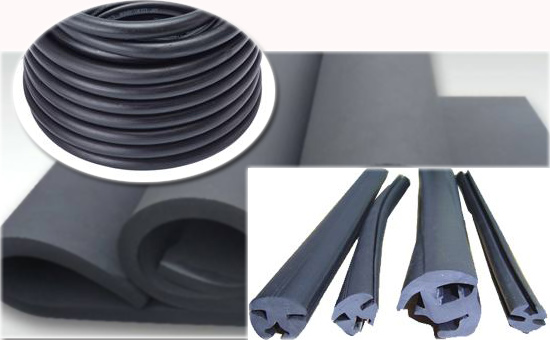
The excellent heat resistance of EPDM rubber provides a good "basic condition" for the production of heat-resistant rubber products. However, in order to produce rubber products that meet the conditions of use, various compounding agents are required; in actual production, The vulcanization system is one of the main factors affecting the heat resistance of the rubber compound. The low sulfur blending can further improve the heat resistance of the EPDM rubber and expand the application range of the EPDM rubber/recycled rubber product 1JLYY916.
The so-called low-sulfur blending is simply a combination system in which the sulfur content in the vulcanization system is lower than that of the ordinary sulfur vulcanization system, and the low sulfur blending is usually achieved by adjusting the vulcanizing agent type and increasing the amount of the accelerator.
1. Advantages of low-sulfur blending: Generally, in sulfur-containing EPDM vulcanization system, the amount of sulfur is small, and the amount of rubber accelerator is appropriately increased, which can reduce polysulfide bonds (poor sulfur bond stability and easy decomposition) The quantity, which produces more monosulfide bonds, improves the thermal stability of the EPDM vulcanizate. Rubber products manufacturers can also choose peroxide vulcanization, the most common DCP.
2. Disadvantages of low sulfur blending: In actual production, low sulfur blending can improve the heat resistance and resistance of EPDM rubber products, EPDM recycled rubber products or EPDM rubber/Recycled rubber vulcanizates. Compressive permanent deformability; however, compared with the vulcanized compound of ordinary sulfur vulcanization system, the mechanical strength is low and the vulcanization time is longer during vulcanization. These two points require special attention.
3. How to design EPDM low sulfur system better
Low-sulfur blending has its own unique advantages, which is more favorable for the heat resistance of EPDM rubber, especially EPDM rubber products that need to work under high temperature conditions for a long time; but the physical and mechanical properties of the rubber compound are low, and the vulcanization rate is slow. Then how to deal with it. In fact, Xiao Bian believes that it is a good choice to use a small amount of sulfur with DPC and a suitable amount of accelerator. Among them, the accelerator M, the accelerator DM and the accelerator CM are more advantageous for the heat resistance of the EPDM rubber or the reclaimed rubber product.
In actual production, since the processing temperature of EPDM rubber or EPDM rubber is higher than that of general rubber such as natural rubber, styrene butadiene rubber or butadiene rubber, rubber products manufacturers can also increase the vulcanization temperature and choose High temperature vulcanization to increase the vulcanization rate of EPDM rubber or recycled rubber products.
It should be noted that EPDM reclaimed rubber is a low-cost replacement material for EPDM raw rubber. It contains a part of the compounding agent that has not been completely removed. When designing a low-sulfur blending system of EPDM rubber products containing reclaimed rubber, rubber products The manufacturer needs to reasonably adjust the type and amount of each vulcanizing agent and accelerator in the formula according to actual needs, and continue to share with you later in the specific adjustment plan.
Exclusive original article [commercial authorization] reprint, excerpt and excerpt in any form are prohibited without written authorization. Focus on Hongyun rubber: learn the process formula and raw material technology of producing rubber products from recycled rubber to help you reduce costs and increase profits